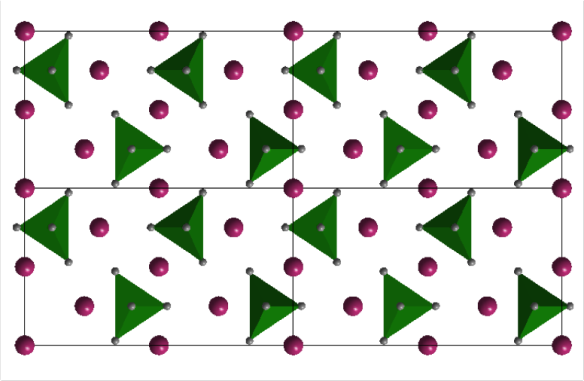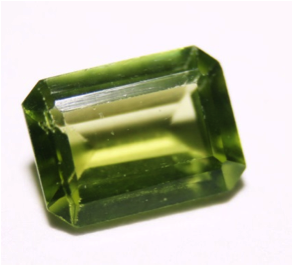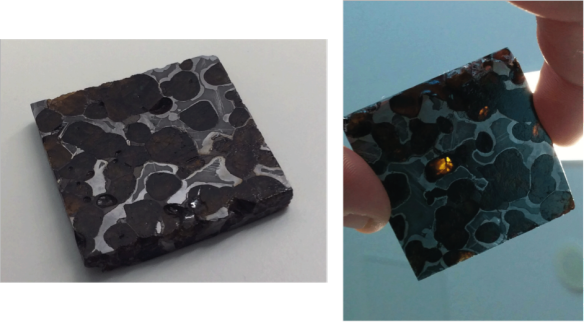August Birthstone: Peridot
What does it look like?

Figure 1. Forsterite crystal structure. Image was made using the Diamond crystal structure visualisation package. Si atoms are green, Oxygen are grey and Mg/Fe maroon.
What is it?

Figure 2. "Gemperidot" by Michelle Jo – Own work by Michelle Jo. Licensed under Public domain via Wikimedia Commons – http://commons.wikimedia.org/wiki/ File:Gemperidot.JPG
This month's birthstone is another structure we have met before. It is a form of Olivine, (Mg,Fe)2SiO4, which we saw here in the "What is our planet made of?" series. Peridot is the gem form of Olivine and is a particular olive green, which is where the name comes from (Figure 2). Interestingly, while lots of the other birthstones we have talked about come in a variety of colours, Olivine is unique amongst gemstones as it only comes in one colour with the depth of the olive green dependent on the iron content.
The earliest record of peridot as a gemstone comes from England in 1245 when a Bishop is said to have bequeathed his rings, one of which contained "a stone call'd peridot" to St Albans Abbey on the occasion of his death. Thus, the origin of the word "peridot" is thought to come from the Anglo–Norman word "pedoretés".
As we have talked about this structure before, I thought it would be interesting to talk about my favourite occurrence of "large" single crystals of Olivine.
Pallasite meteorites

Figure 3. A section of pallasite meteorite "Brenham".
These are some of the weirdest looking rocks you will ever see. They look artificial. They are simply large peridot crystals embedded in a metal matrix. This classes them as a stony-iron meteorite. They are a very rare type of meteorite and one of the most sought-after due to their aesthetic appeal. To date, 61 have been found with only 4 observed from falls. Contrast that to 27,000 catalogued chondritic meteorites (a type of stony meteorite). However, as finds of these meteorites tend to yield large amounts of material, this means that they can be readily studied.
How these meteorites form is a subject of debate. The dominant theory is that they represent material from the core-mantle boundary of the parent body. Recently, a new theory has emerged which suggests that pallasites may have formed as a result of an impact between core and mantle material, rather than representing the two in situ.
Where did it come from?
The structure shown here is from:
Nord, A. G., Annersten, H., Filippidis, A. (1982) The cation distribution in synthetic Mg-Fe-Ni olivines. American Mineralogist 67 1206-1211.
It is available in the American Mineralogist Crystal Structure Database.






